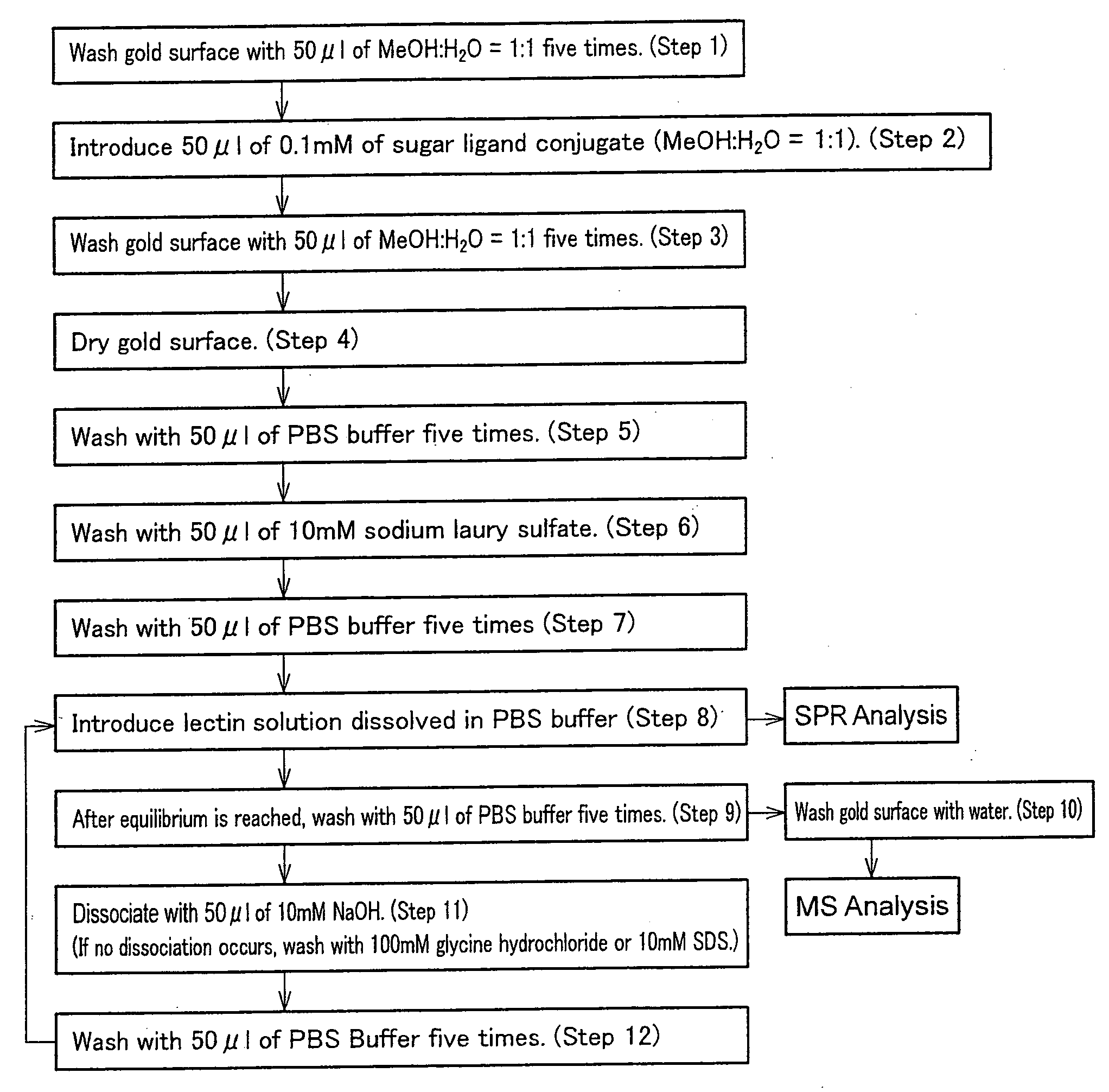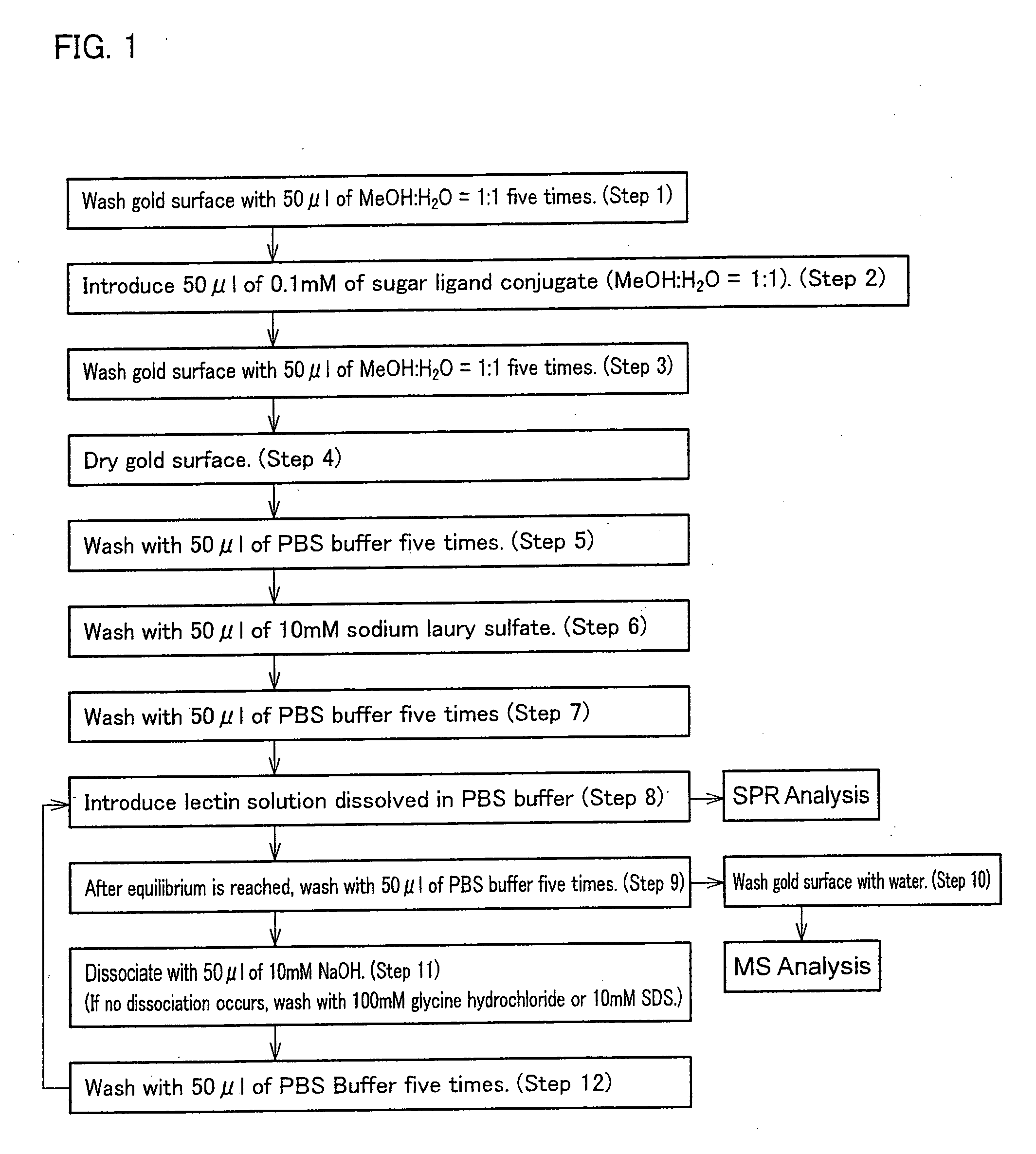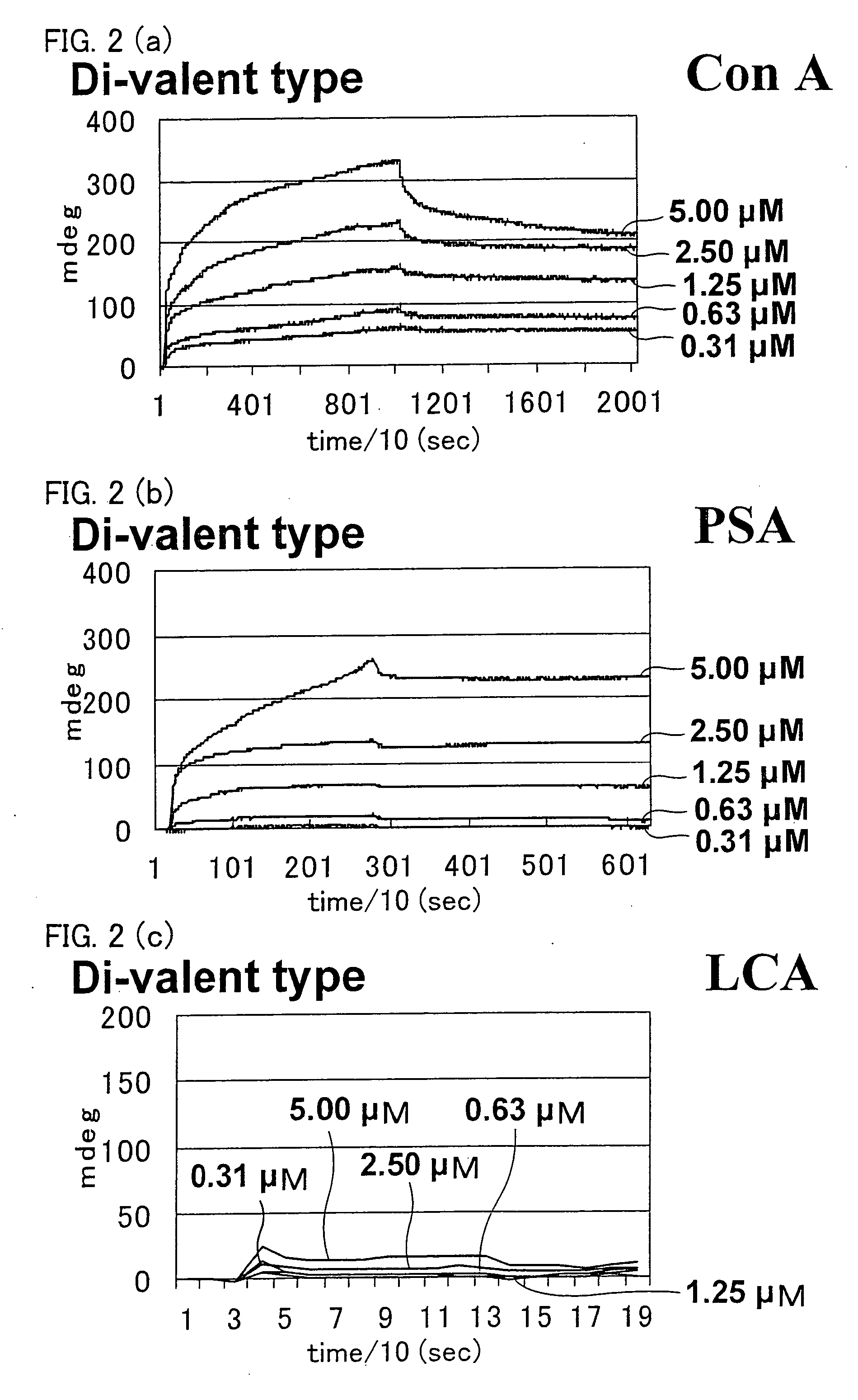Carohydrate-Ligand Conjugates and Their Application for the Analysis of Carbohydrate-Protein Interaction
a technology of carbohydrate and ligand, applied in the field of new ligand conjugates, can solve the problems of insufficient activity of single oligosaccharic molecule and inability to establish a satisfactory data techniqu
- Summary
- Abstract
- Description
- Claims
- Application Information
AI Technical Summary
Benefits of technology
Problems solved by technology
Method used
Image
Examples
example 1
Synthesis of Ligand Conjugates (Compounds 1 to 4)
[0127] In the present Example, four ligand conjugates classified respectively as first to fourth ligand conjugates described in the embodiment were synthesized.
[0128] (1) Synthesis of First Ligand Conjugate (Compound 1)
[0129] A ligand conjugate (Compound 1), which was a first ligand conjugate mentioned above, was synthesized as follows, the ligand conjugate (compound 1) having a structure represented by General Formula (12), where n1 was 1, X was represented by General Formula (2), R′ was a hydrogen (H), and R is maltose shown by Formula (18), and m1, m2, and m3 were 2.
[0130] As prepreparation of the synthesis of the ligand conjugate (compound 1), a linker compound A was synthesized, which had three branches each of which had an aromatic amino group end protected with a protection group.
[0131] Firstly, as shown in Formula (21), three units of t-butylacrylate (compound 6) were Michel-added to nitromethane (compound 5) under benzyl...
example 2
SPR Measurement and Mass Spectroscopy for Protein Analysis
[0188] In Example 2, binding properties between sugar chains and proteins were analyzed using the ligand conjugates prepared in Example 1 by SPR measurement and mass spectroscopy. The analysis was carried out as follows.
[0189] In FIG. 1, steps of the protein analysis in the present Example were denoted as steps 1 to 12. In FIG. 1, Steps 1 to 7 are steps for preparing a ligand carrier (sensor chip) by immobilizing a ligand conjugate (any of Compounds 1 to 4) onto a surface of a supporter coated with gold (Au). The steps carried out after Step 8 at which the ligand carrier was allowed to stand in contact with a solution containing a protein to be analyzed are steps for carrying out the SPR measurement. Furthermore, the steps carried out after Step 10 for washing the surface of the supporter with water are for identifying the protein via mass spectroscopy (MS).
[0190] In the present Example, the SPR measurement was conducted b...
example 3
Synthesis of Ligand Conjugates (Compounds 21 and 22)
[0207] In the present Example, ligand conjugates classified as fifth and sixth ligand conjugates explained in the embodiment were synthesized. That is, a ligand conjugate (Compound 21), which was a fifth ligand conjugate, was synthesized as below, the ligand conjugate having a structure represented by General Formula (13), where n2 was 4, X had a structure represented by General Formula (4), R′ was a hydrogen (H), and R was glucose. Further, a ligand conjugate (Compound 22), which was a sixth ligand conjugate, was synthesized as below, the ligand conjugate having a structure represented by General Formula (13), where n2 was 4, X had a structure represented by General Formula (4), R′ was a hydrogen (H), and R was maltose.
[0208] [Analysis Method, Reagents]
[0209]1H-NMR spectroscopy was carried out with JEOL-Delta 600 Spectrometer. Chemical shift for CDCl3 was indicated by 5 value using tetramethylsilane (0.00 ppm) as reference mater...
PUM
| Property | Measurement | Unit |
|---|---|---|
| temperature | aaaaa | aaaaa |
| pH | aaaaa | aaaaa |
| pH | aaaaa | aaaaa |
Abstract
Description
Claims
Application Information
 Login to View More
Login to View More - R&D
- Intellectual Property
- Life Sciences
- Materials
- Tech Scout
- Unparalleled Data Quality
- Higher Quality Content
- 60% Fewer Hallucinations
Browse by: Latest US Patents, China's latest patents, Technical Efficacy Thesaurus, Application Domain, Technology Topic, Popular Technical Reports.
© 2025 PatSnap. All rights reserved.Legal|Privacy policy|Modern Slavery Act Transparency Statement|Sitemap|About US| Contact US: help@patsnap.com



